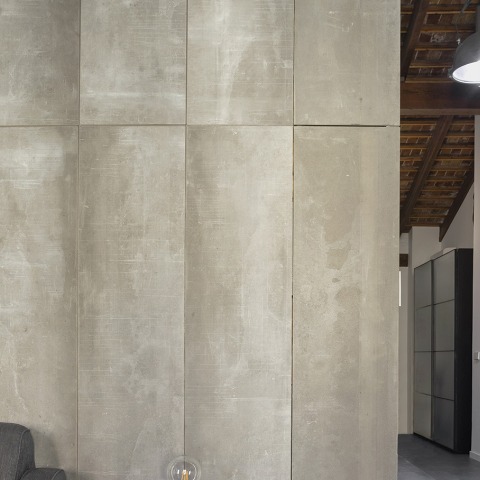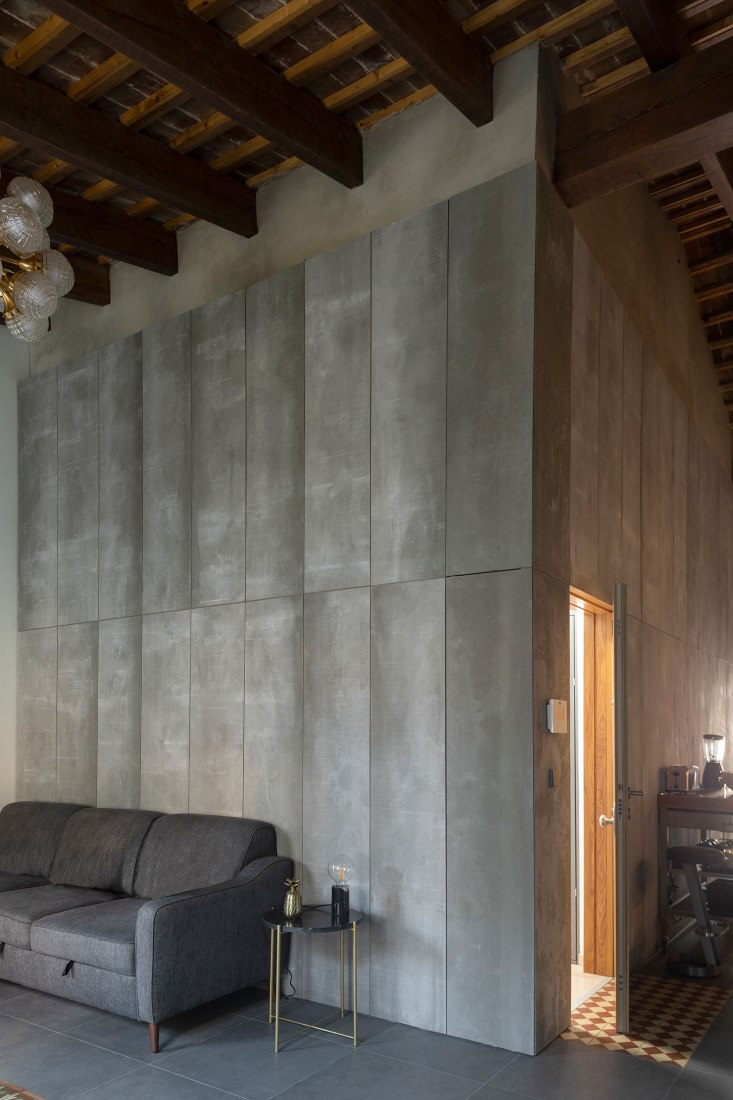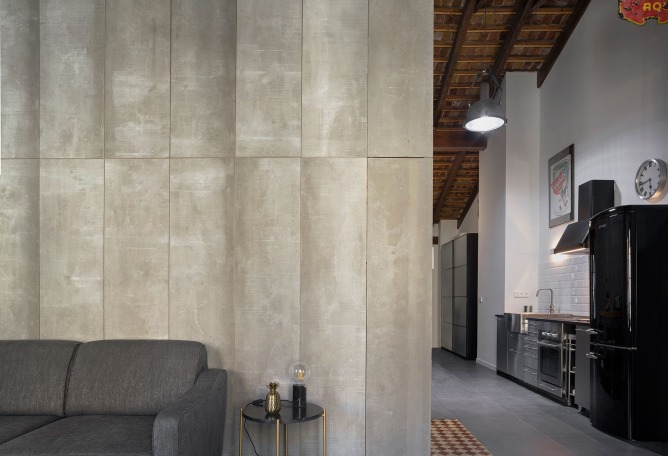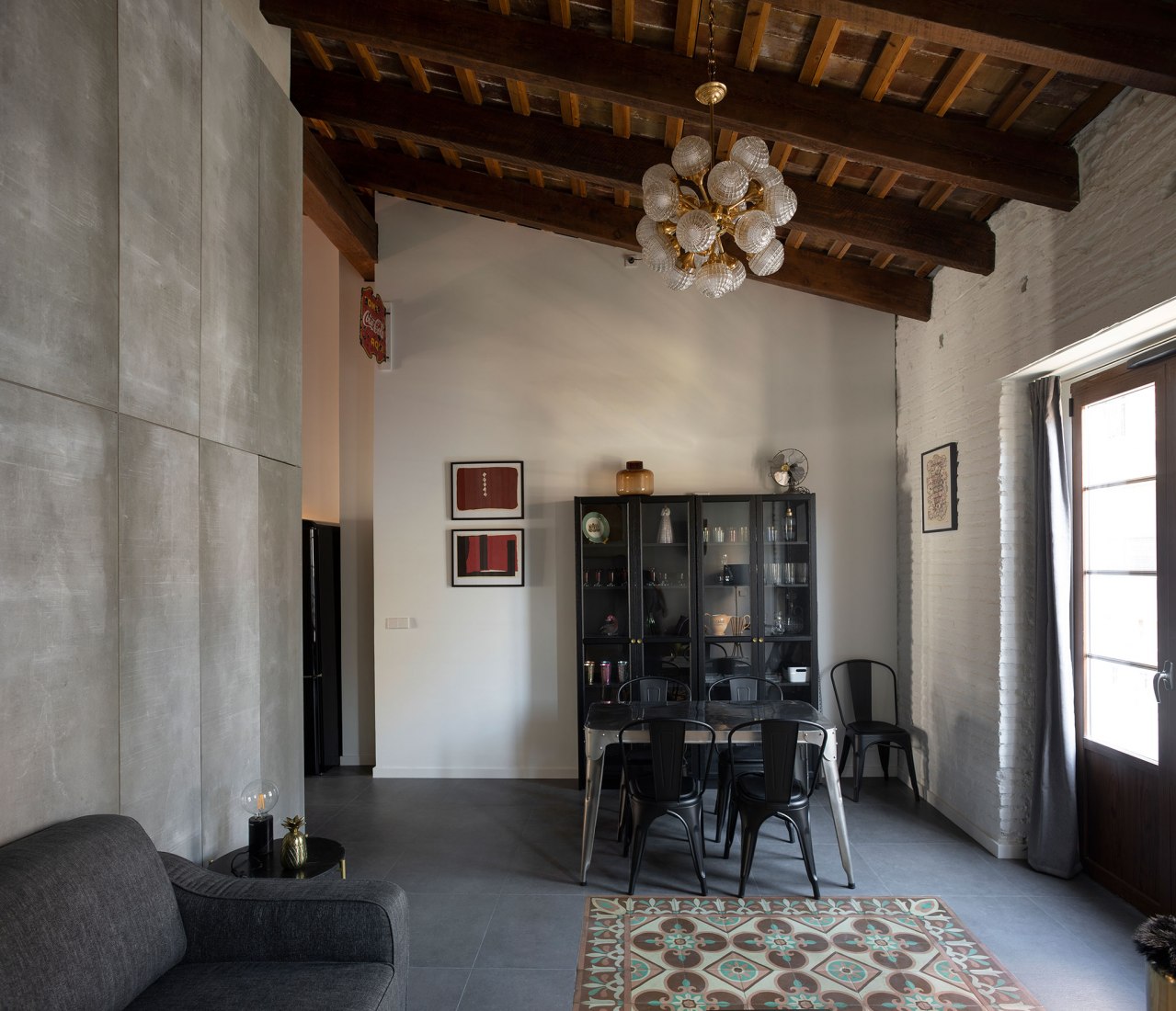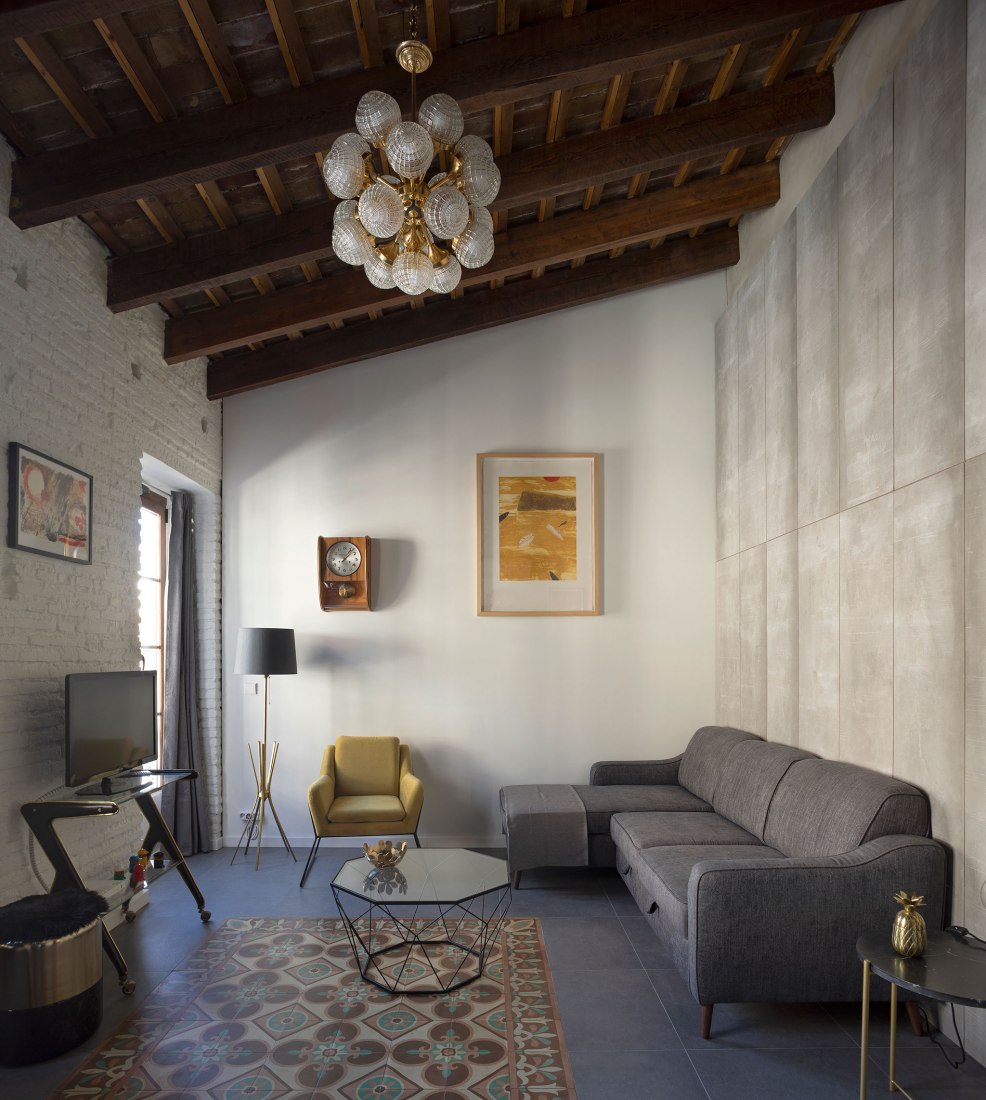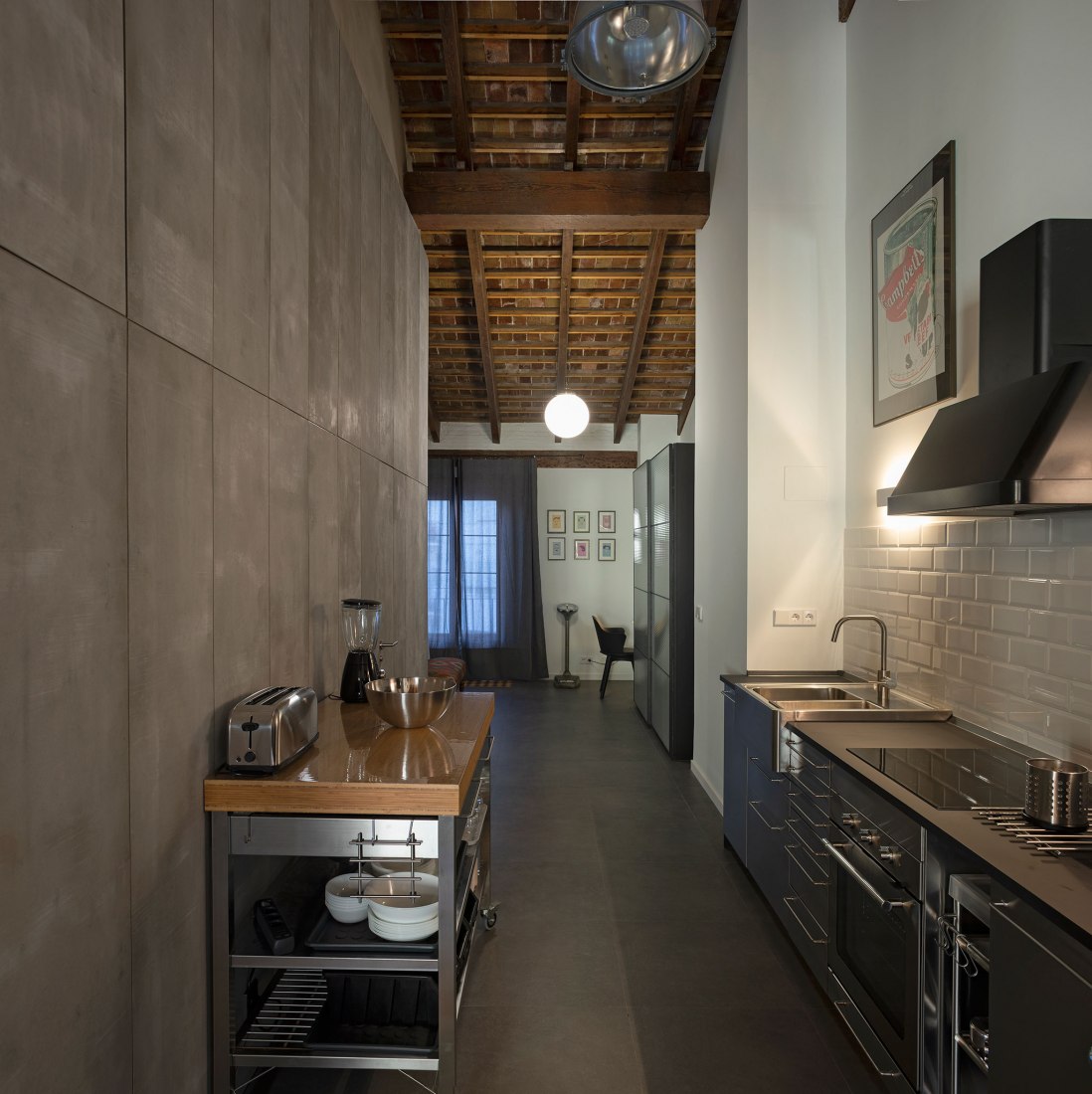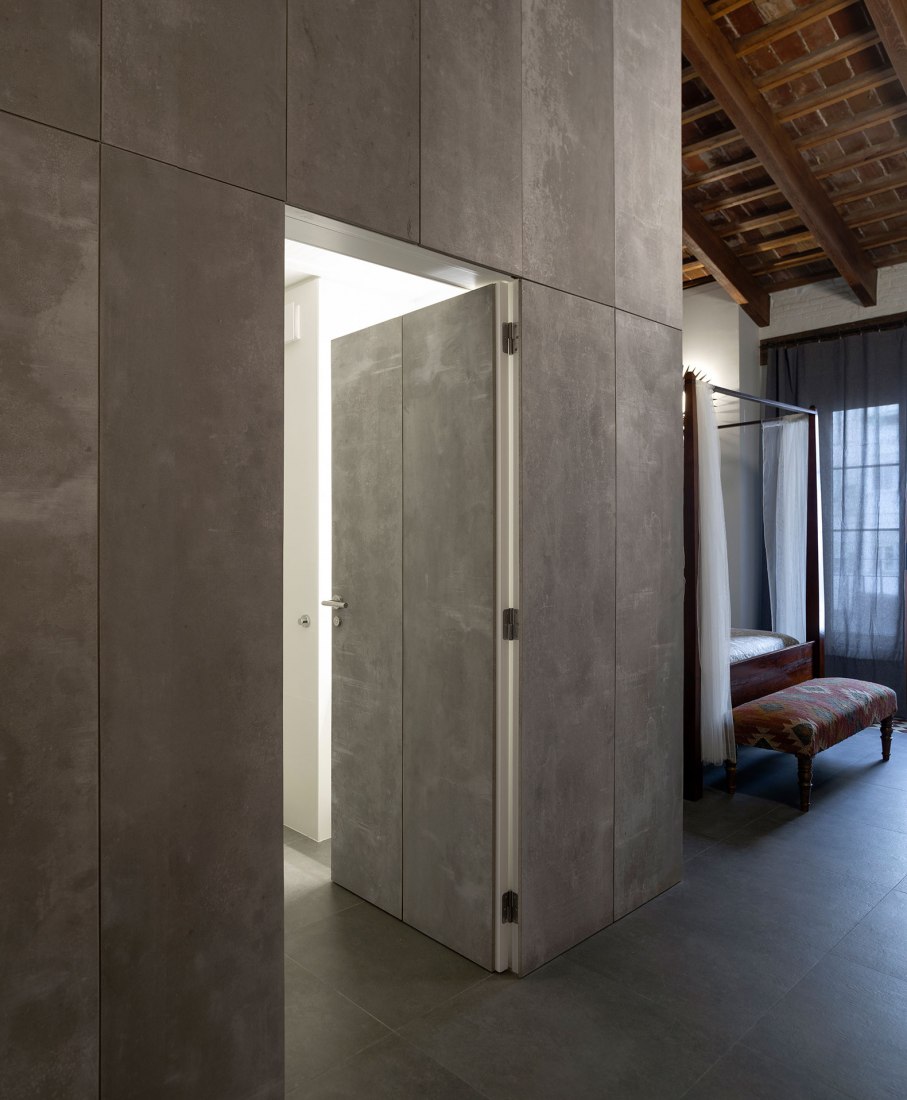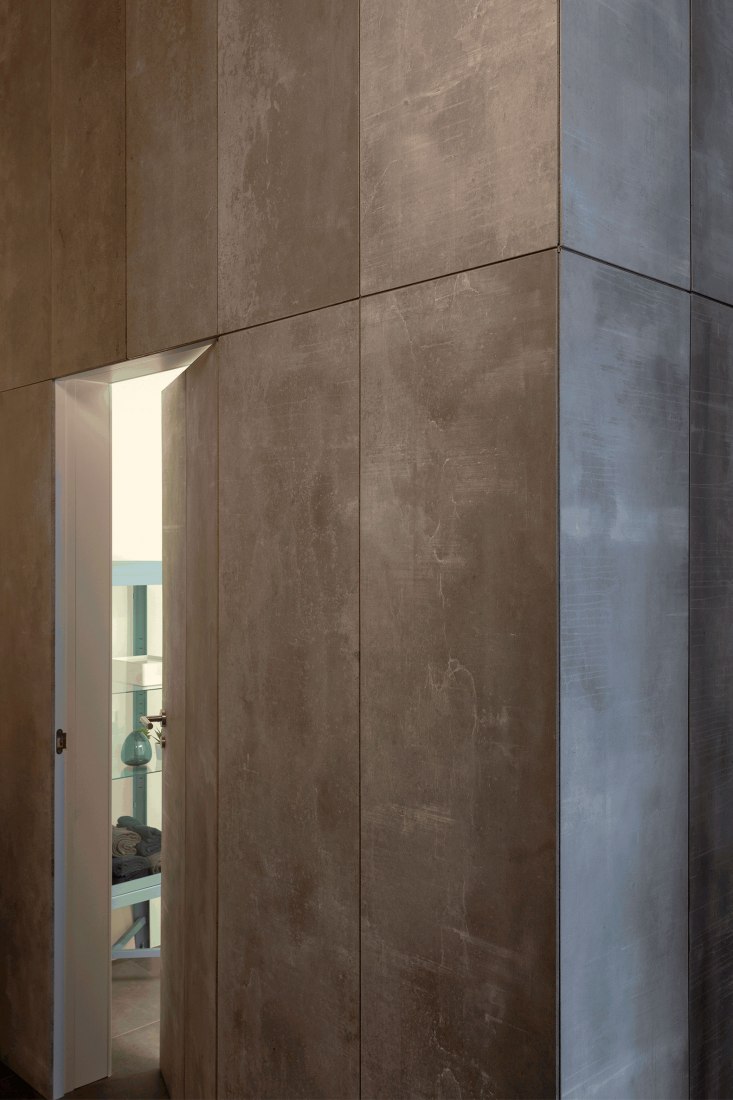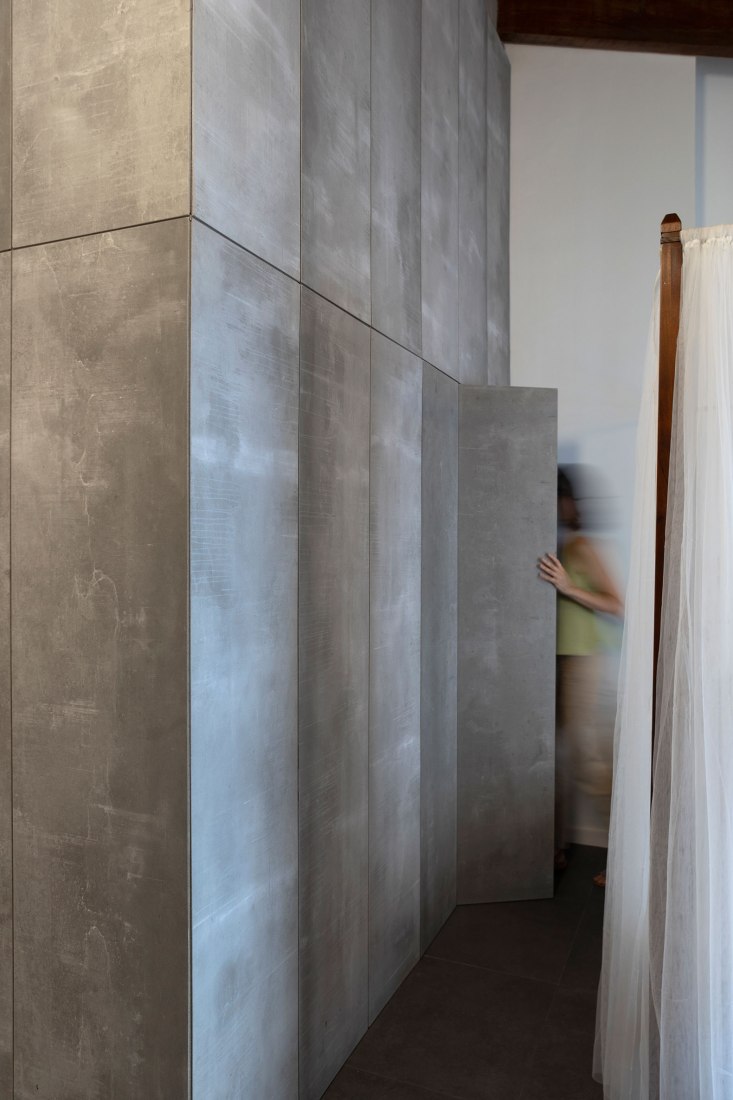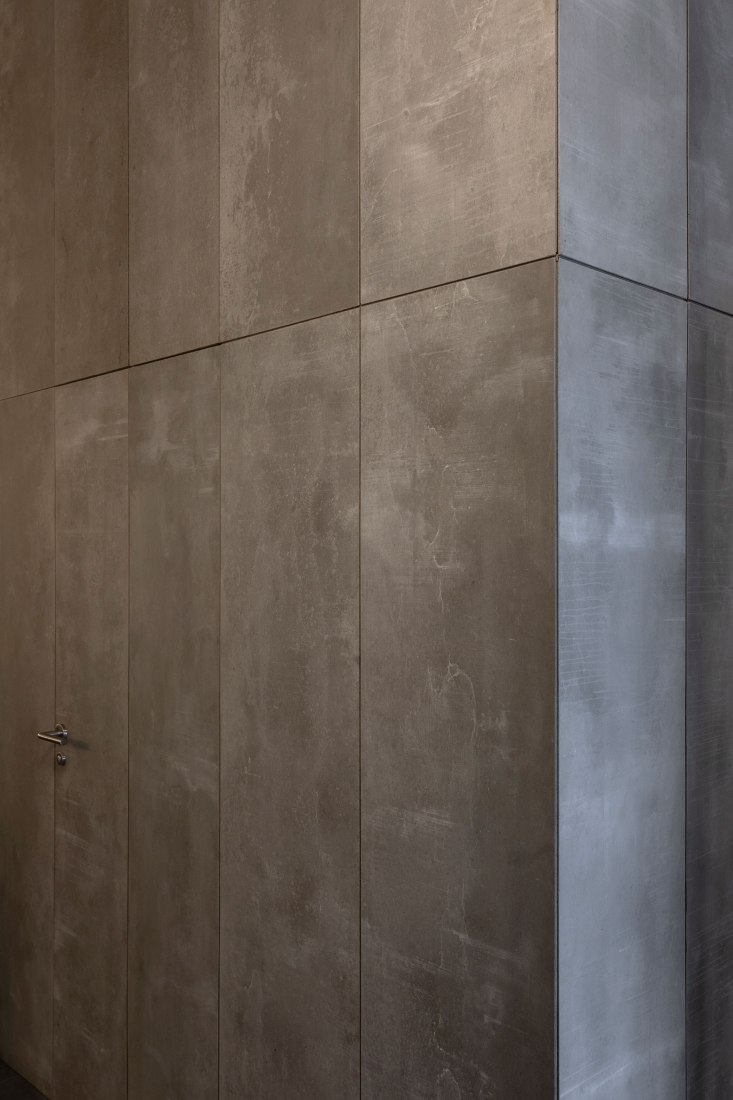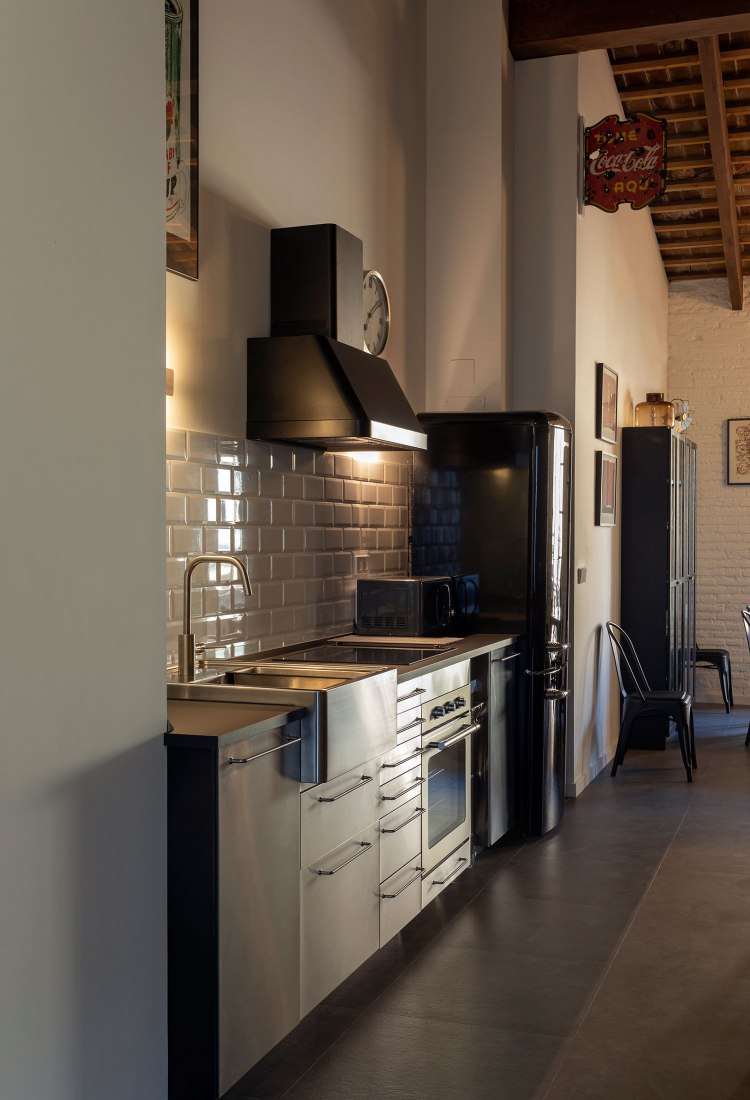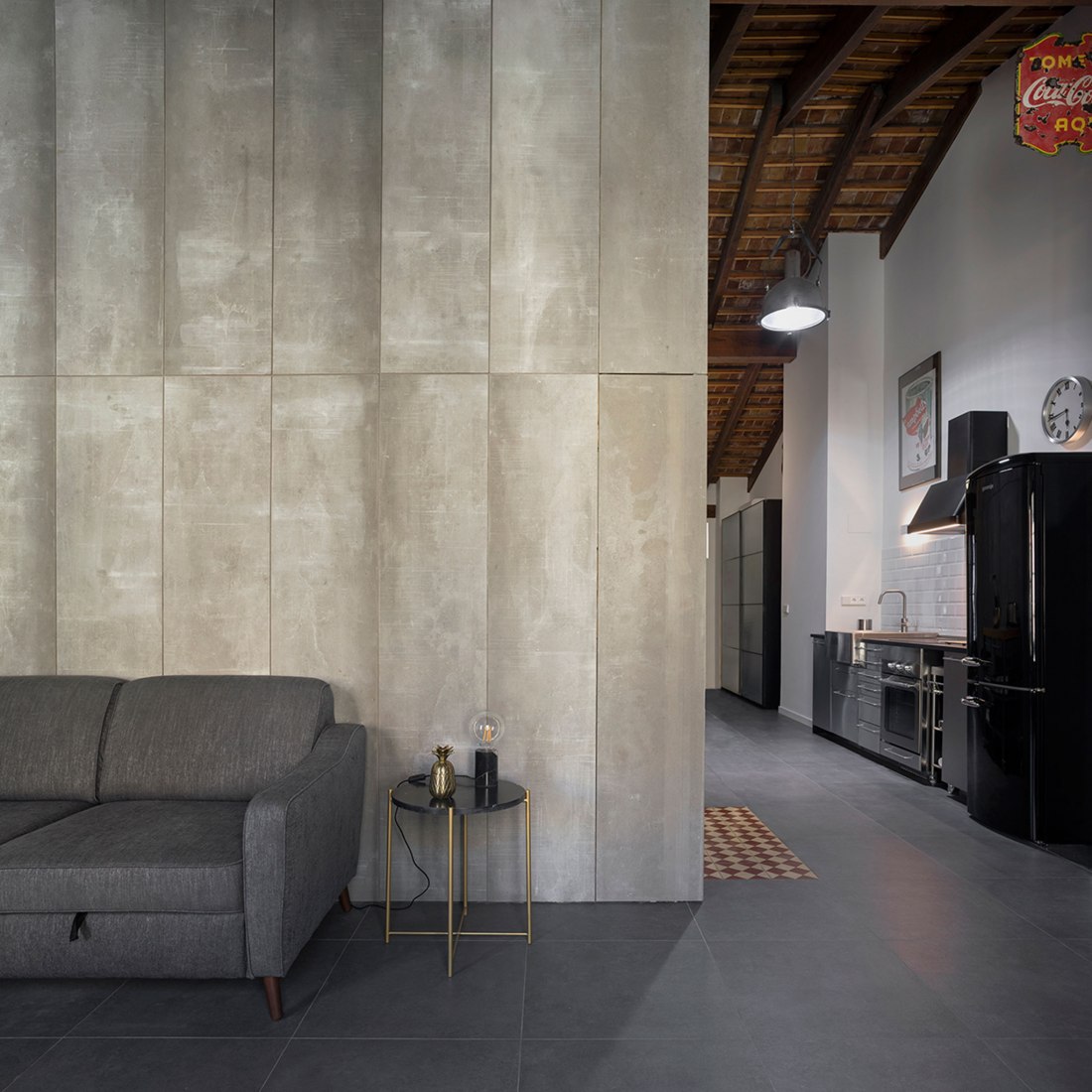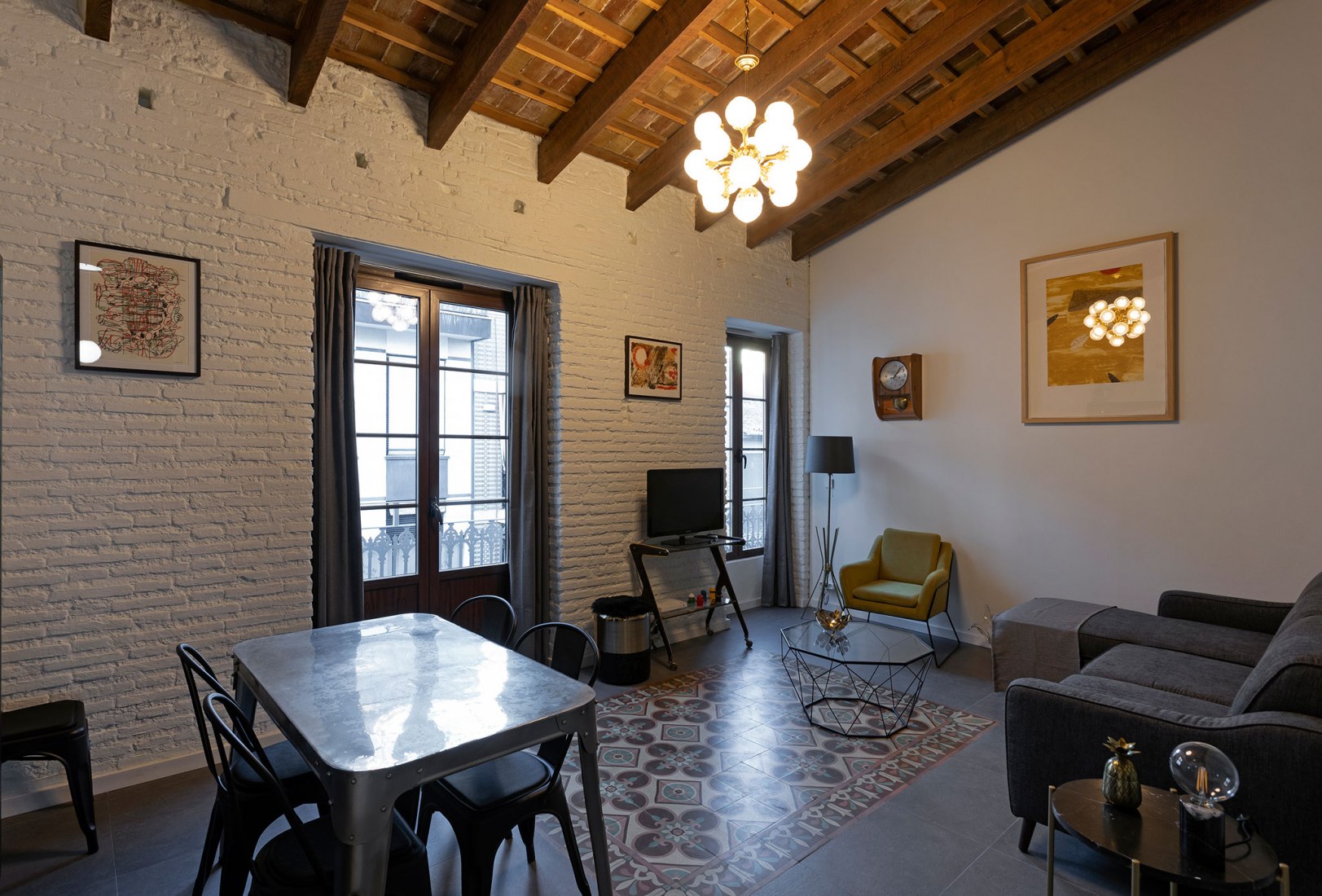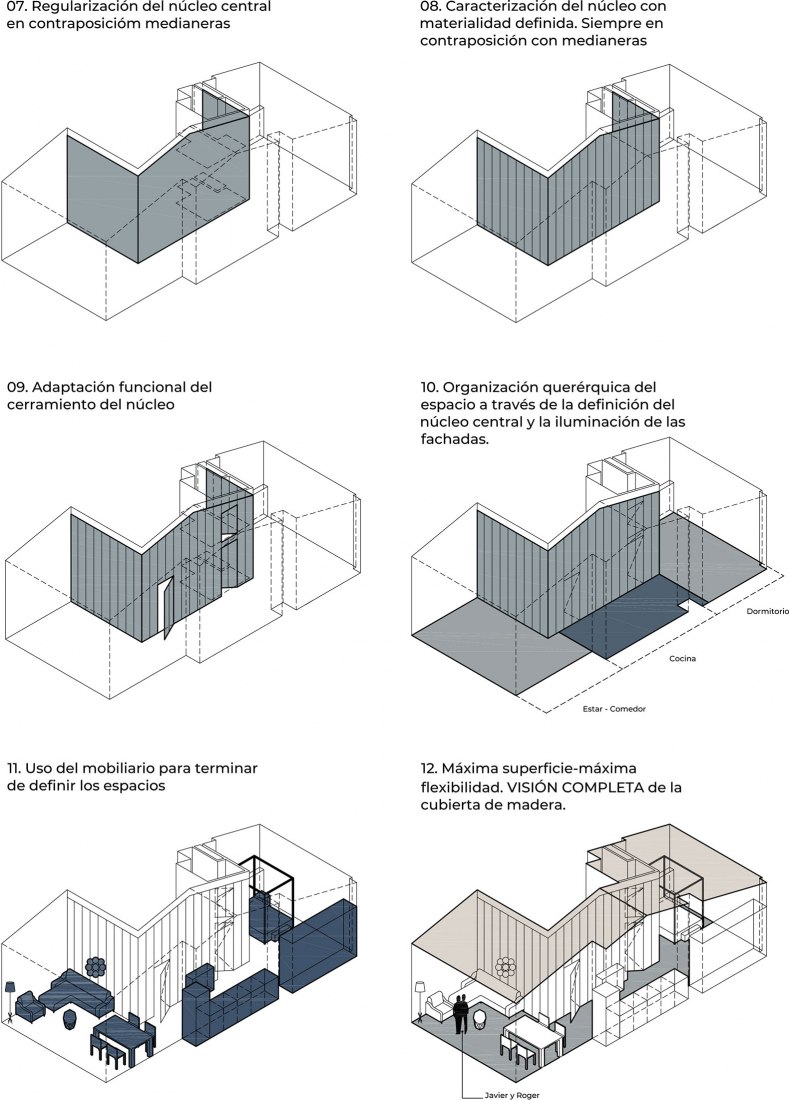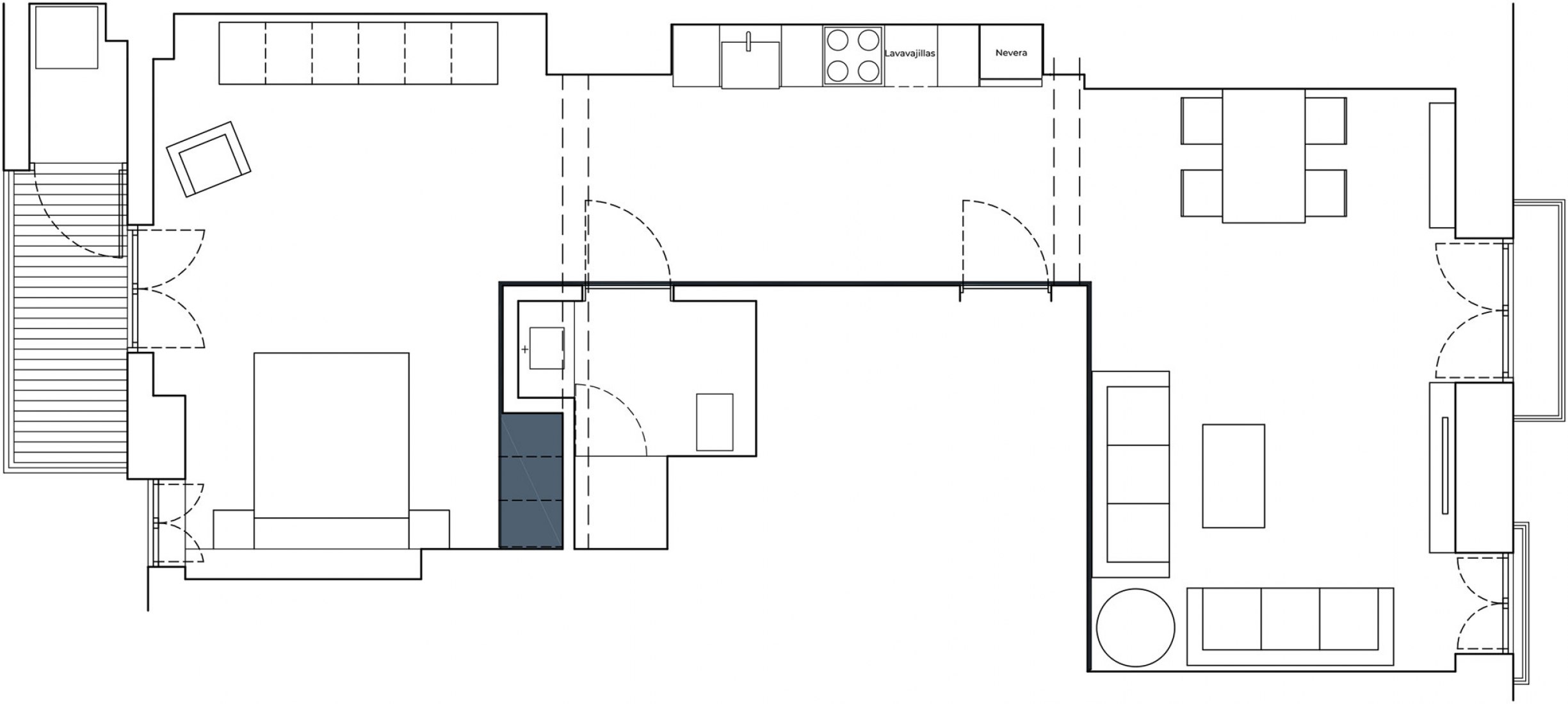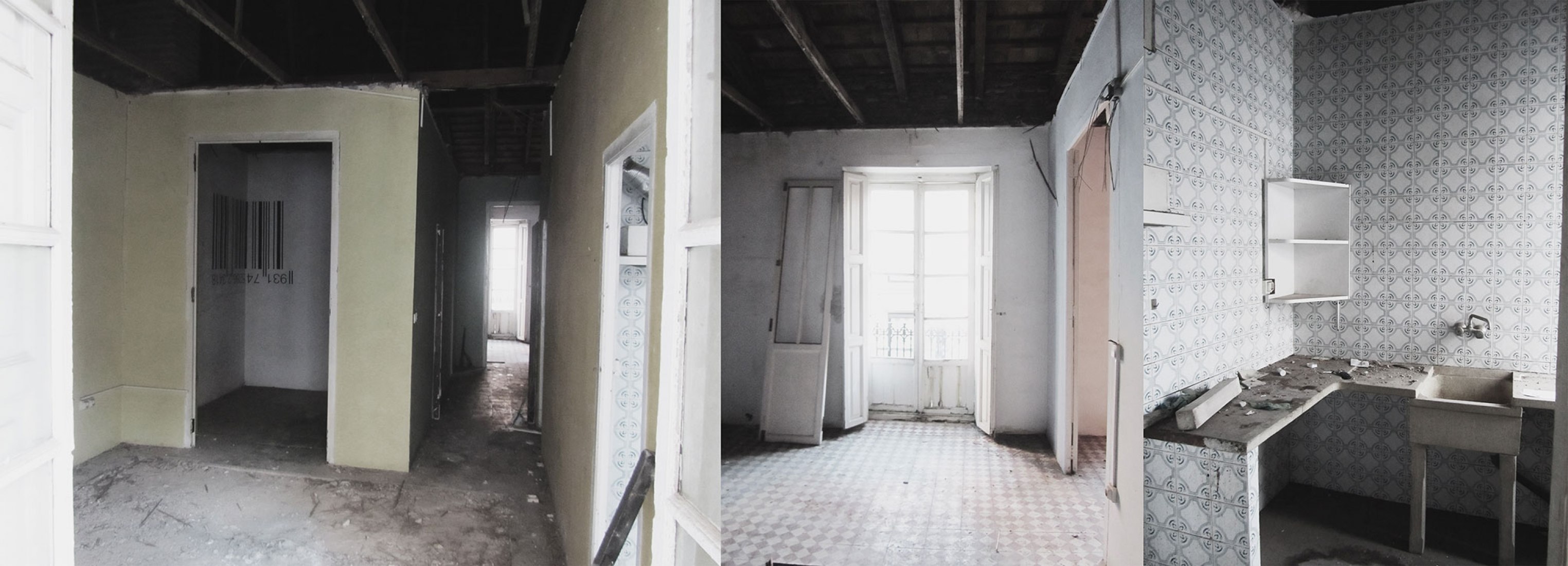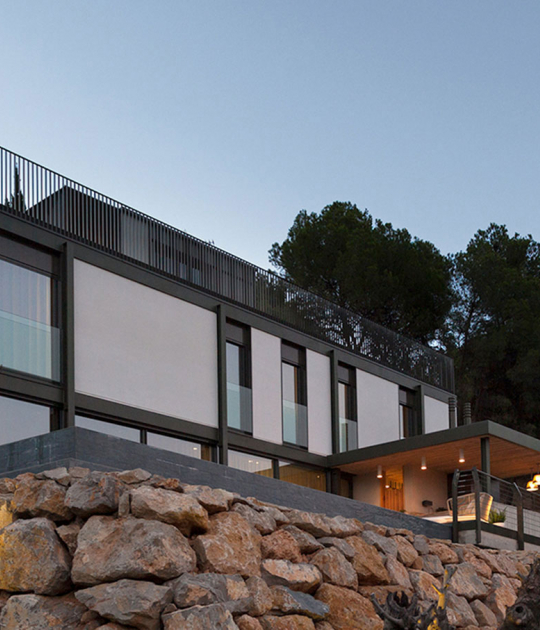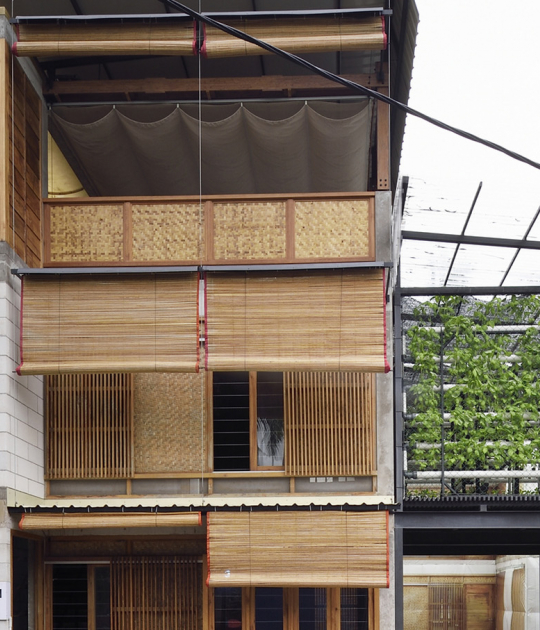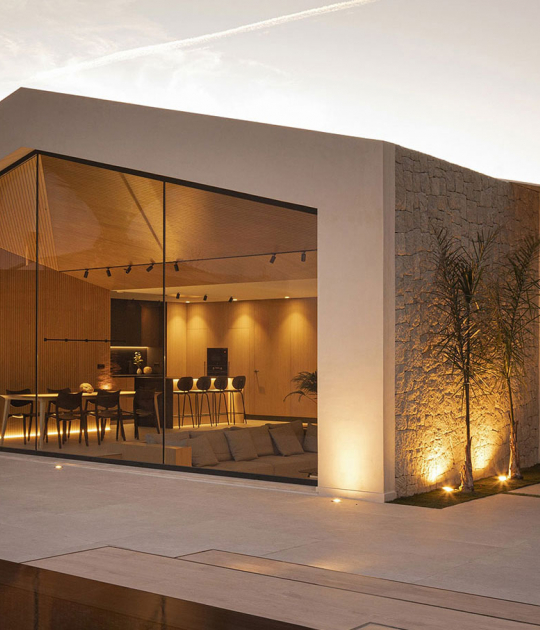Concerning the materials used, a new floor was laid in such a way that it resembled ceramic carpets. In addition, cement wood panelling was used for the central core. The bathroom, on the other hand, was given a continuous finish.
Description of project by Mano de Santo
The project is the result of a process that took a long time due to the general state of the building where the attic was located. When the project began, the building was undergoing renovation, the works took much longer than planned and also modified the initial configuration of the penthouse: the central part of the penthouse was occupied by the new lift shaft.
During this process, we reflected together with our clients the first ideas about the space, changing some and reaffirming others, always with the initial premise of no to do so many things in the space ... and that was the idea ... to do nothing.
Or almost nothing, the small attic we already found with the ceiling exposed, and the core closed in the central area of the space due to the placement of the new lift ...we tried to take advantage of it.
The ceiling, well preserved, had to be the protagonist, and we made it visible throughout the house giving continuity and personality to the space, simply cleaning and a varnish treatment to highlight its materiality.
We regularised the central core, inserting the closed functional pieces required by the mini-dwelling programme, a bathroom and storage, giving it a continuous finish that did not compete with either the ceiling or the irregular party walls. Wood-cement panelling was used.
The location of the core was used to organise the dwelling without partition walls. The new lift core, which divided the space in two, was used to zonify (not compartmentalise) the space, simply following a criterion of privacy.
A new floor was laid, taking advantage of some existing tiles that were laid as ceramic carpets; the sharing walls were covered with plasterboard to insulate the walls acoustically, and the furniture was installed and nothing else.
